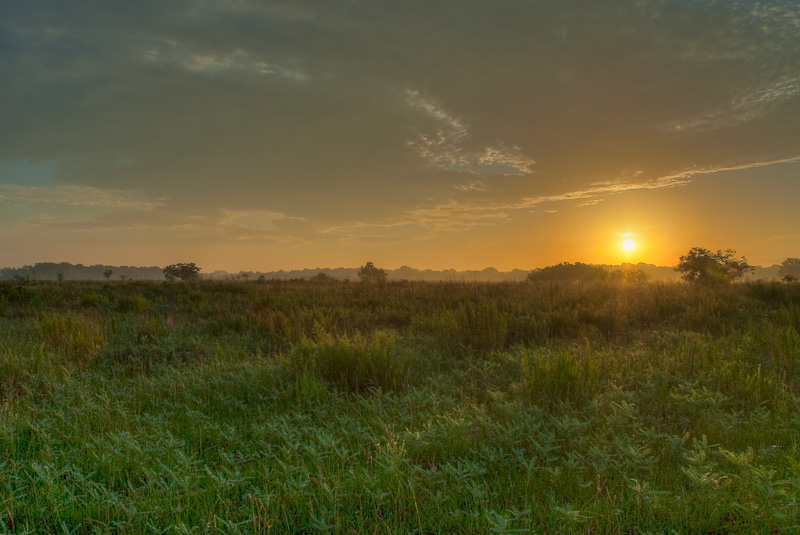View a list of Programs and Tools which may Apply to Large Acreage Landowners
For the purpose of this website, Owners of Large Tracts of Non-agricultural Land will include:
- Private landowner with tracts of land usually greater than 500 acres
- Businesses with large tracts of land usually greater than 500 acres
- Non-profit and community groups with land usually greater than 500 acres
In a world with competing conservation needs, often times limited funding for conservation work is preferentially designated to projects where the most impact can occur. Generally, large tracts of habitat have been recognized as more valuable to wildlife than many small fragmented patches. Large tract landowner partnerships are often desirable for conservation programs because the collaboration can potentially result in a massive impact for wildlife and natural resources in the surrounding area.
Programs and Tools which may Apply to Large Acreage Landowners
Click on a program below to learn more
 AgriLife Extension Program - Texas A&M AgriLife Extension Service The AgriLife Extension Program, a part of Texas A&M AgriLife Extension Service, is an education agency with a statewide network of professional educators and volunteers. AgriLife presents research-based education programs on a wide variety of topics from 4-H Youth Development to Disaster Management. Courses of interest to wetland owners may include restoration and conservation of wildlife habitat, wildlife and fisheries management, water use efficiency, watershed health and protection, and wetland restoration. The AgriLife Extension Program website offers online courses and job training, access... Read More →
AgriLife Extension Program - Texas A&M AgriLife Extension Service The AgriLife Extension Program, a part of Texas A&M AgriLife Extension Service, is an education agency with a statewide network of professional educators and volunteers. AgriLife presents research-based education programs on a wide variety of topics from 4-H Youth Development to Disaster Management. Courses of interest to wetland owners may include restoration and conservation of wildlife habitat, wildlife and fisheries management, water use efficiency, watershed health and protection, and wetland restoration. The AgriLife Extension Program website offers online courses and job training, access... Read More →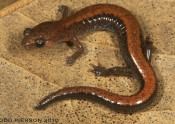 Candidate Conservation Agreement with Assurances (CCAA) - US Fish and Wildlife Service (USFWS) Candidate Conservation Agreements with Assurances are a tool for non-Federal private landowners who voluntarily take measures to stabilize and restore populations of rare or candidate species before they are listed under the Endangered Species Act. Landowners participate in identifying threats to these species, by taking part in conservation activities specific to the species, and by improving and maintaining critical habitat. This formal agreement between the landowner and US Fish and Wildlife Service guarantees that if the CCAA if fulfilled, the landowner will... Read More →
Candidate Conservation Agreement with Assurances (CCAA) - US Fish and Wildlife Service (USFWS) Candidate Conservation Agreements with Assurances are a tool for non-Federal private landowners who voluntarily take measures to stabilize and restore populations of rare or candidate species before they are listed under the Endangered Species Act. Landowners participate in identifying threats to these species, by taking part in conservation activities specific to the species, and by improving and maintaining critical habitat. This formal agreement between the landowner and US Fish and Wildlife Service guarantees that if the CCAA if fulfilled, the landowner will... Read More →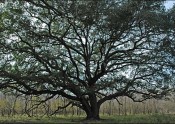 Carbon Storage and Credits: Landowner/Developer and Aggregators - Various Private and Nonprofit Entities Choosing a Marketplace for Carbon Trade No one single program deals with carbon offset credits. One branch of the carbon market is the compliance market where carbon emitters are required to offset their emissions by local, state, federal, or international policy. The other branch of the carbon market is the voluntary market where individuals and businesses volunteer to purchase carbon offsets in order to reduce their greenhouse gas emission impacts. There are several marketplaces (often called exchanges) for buyers and sellers of carbon... Read More →
Carbon Storage and Credits: Landowner/Developer and Aggregators - Various Private and Nonprofit Entities Choosing a Marketplace for Carbon Trade No one single program deals with carbon offset credits. One branch of the carbon market is the compliance market where carbon emitters are required to offset their emissions by local, state, federal, or international policy. The other branch of the carbon market is the voluntary market where individuals and businesses volunteer to purchase carbon offsets in order to reduce their greenhouse gas emission impacts. There are several marketplaces (often called exchanges) for buyers and sellers of carbon... Read More →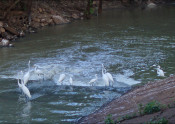 Clean Water State Revolving Fund Loan Program: Texas Loan Program - Texas Water Development Board (TWDB) The Clean Water State Revolving Fund (CWSRF), which is authorized by the Clean Water Act and funded by the US Environmental Protection Agency (EPA), provides below-market interest rate loans to applicants wishing to implement projects for estuary management, nonpoint source pollution management, or wastewater management. Applicants can be cities, counties, districts, river authorities, and private owners. Funding can be used for planning, design, and construction of projects. CWSRF can be used for wetland projects. According to the EPA, wetland projects are usually categorized... Read More →
Clean Water State Revolving Fund Loan Program: Texas Loan Program - Texas Water Development Board (TWDB) The Clean Water State Revolving Fund (CWSRF), which is authorized by the Clean Water Act and funded by the US Environmental Protection Agency (EPA), provides below-market interest rate loans to applicants wishing to implement projects for estuary management, nonpoint source pollution management, or wastewater management. Applicants can be cities, counties, districts, river authorities, and private owners. Funding can be used for planning, design, and construction of projects. CWSRF can be used for wetland projects. According to the EPA, wetland projects are usually categorized... Read More →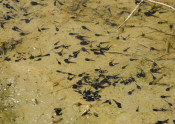 Conservation Technical Assistance Program (CTA) - USDA Natural Resources Conservation Service (NRCS) The Conservation Technical Assistance (CTA) program is a voluntary program administered by the National Resources Conservation Service (NRCS) to provide land users with the technical assistance needed to maintain and restore healthy productive landscapes. CTA assistance can help address a broad range of conservation topics including enhancement of fish and wildlife habitat, soil loss from erosion, agricultural waste and nutrient management, and long term sustainability of production lands. Land users such as agricultural and silvicultural producers, local governments, citizen groups, Tribal governments,... Read More →
Conservation Technical Assistance Program (CTA) - USDA Natural Resources Conservation Service (NRCS) The Conservation Technical Assistance (CTA) program is a voluntary program administered by the National Resources Conservation Service (NRCS) to provide land users with the technical assistance needed to maintain and restore healthy productive landscapes. CTA assistance can help address a broad range of conservation topics including enhancement of fish and wildlife habitat, soil loss from erosion, agricultural waste and nutrient management, and long term sustainability of production lands. Land users such as agricultural and silvicultural producers, local governments, citizen groups, Tribal governments,... Read More → Landowner Incentive Program - Texas Parks and Wildlife Department Landowner Incentive Program (LIP) The Landowner Incentive Program (LIP) is a voluntary conservation program administrated by Texas Parks and Wildlife Department and funded through the US Fish and Wildlife Service (USFWS) Partners for Fish and Wildlife Program, National Fish and Wildlife Foundation, and others. LIP provides financial assistance to landowners who wish to implement conservation practices, particularly for activities benefiting rare or at-risk species and valuable riparian areas and watersheds. LIP is a reimbursement program. Landowners will receive payment upon completion of the... Read More →
Landowner Incentive Program - Texas Parks and Wildlife Department Landowner Incentive Program (LIP) The Landowner Incentive Program (LIP) is a voluntary conservation program administrated by Texas Parks and Wildlife Department and funded through the US Fish and Wildlife Service (USFWS) Partners for Fish and Wildlife Program, National Fish and Wildlife Foundation, and others. LIP provides financial assistance to landowners who wish to implement conservation practices, particularly for activities benefiting rare or at-risk species and valuable riparian areas and watersheds. LIP is a reimbursement program. Landowners will receive payment upon completion of the... Read More →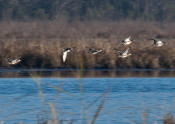 Mitigation Bank Credit: Landowners/Developers and Aggregators - Various Private and Nonprofit Entities Creating a Mitigation Bank Basic process for developing your own mitigation bank: Planning Pre-prospectus meeting with the US Army Corps of Engineers (USACE) Submission of draft prospectus for review by USACE. If USACE finds the prospectus feasible, it will be sent out on public notice for comment. Review by federal, state, and local agencies and general public Mitigation Bank Review Team assessment Mitigation bank instrument development – legal document for the bank Mitigation bank instrument is sent out for public notice Bank approval... Read More →
Mitigation Bank Credit: Landowners/Developers and Aggregators - Various Private and Nonprofit Entities Creating a Mitigation Bank Basic process for developing your own mitigation bank: Planning Pre-prospectus meeting with the US Army Corps of Engineers (USACE) Submission of draft prospectus for review by USACE. If USACE finds the prospectus feasible, it will be sent out on public notice for comment. Review by federal, state, and local agencies and general public Mitigation Bank Review Team assessment Mitigation bank instrument development – legal document for the bank Mitigation bank instrument is sent out for public notice Bank approval... Read More →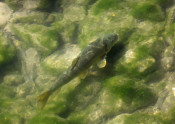 National Fish Passage Program - US Fish and Wildlife Service (USFWS) Dams in Texas According to the US Army Corps of Engineer’s National Inventory of Dams, Texas has over 7,000 dams, more than any other state. Most dams in Texas are privately owned, low-hazard earthen dams built between 1950 and 1989. The amount of damming along Texas waterways has led to freshwater stream habitat fragmentation. Aquatic species which migrate along the streams for spawning and other life cycle events are impeded by the obstructions. Today, many of the dams are obsolete and only... Read More →
National Fish Passage Program - US Fish and Wildlife Service (USFWS) Dams in Texas According to the US Army Corps of Engineer’s National Inventory of Dams, Texas has over 7,000 dams, more than any other state. Most dams in Texas are privately owned, low-hazard earthen dams built between 1950 and 1989. The amount of damming along Texas waterways has led to freshwater stream habitat fragmentation. Aquatic species which migrate along the streams for spawning and other life cycle events are impeded by the obstructions. Today, many of the dams are obsolete and only... Read More →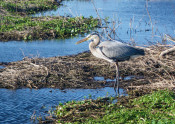 Neotropical Migratory Bird Conservation Act (NMBCA) Grants - US Fish and Wildlife Service (USFWS) About the Neotropical Migratory Bird Conservation Act Grants The Neotropical Migratory Bird Conservation Act’s (NMBCA) mission is to foster long-term conservation of neotropical migratory birds and their habitat in North America and the Caribbean. The upper Texas coast is a critical stopover point for migratory birds traveling along the Central and Mississippi Flyways, and is even used by birds traveling the Pacific and Atlantic Flyways. NMBCA, administered by the US Fish and Wildlife Service (USFWS) Division of Bird Habitat Conservation, provides cost-share... Read More →
Neotropical Migratory Bird Conservation Act (NMBCA) Grants - US Fish and Wildlife Service (USFWS) About the Neotropical Migratory Bird Conservation Act Grants The Neotropical Migratory Bird Conservation Act’s (NMBCA) mission is to foster long-term conservation of neotropical migratory birds and their habitat in North America and the Caribbean. The upper Texas coast is a critical stopover point for migratory birds traveling along the Central and Mississippi Flyways, and is even used by birds traveling the Pacific and Atlantic Flyways. NMBCA, administered by the US Fish and Wildlife Service (USFWS) Division of Bird Habitat Conservation, provides cost-share... Read More →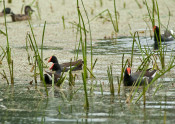 North American Wetlands Conservation Act (NAWCA) Grants - US Fish and Wildlife Service (USFWS) The North American Wetlands Conservation Act (NAWCA) mission is to preserve and enhance wetlands associated with migratory birds and other wildlife. NAWCA, administered by the US Fish and Wildlife Service (USFWS) Division of Bird Habitat Conservation, provides cost-share grants to organizations and individuals who have developed partnerships to implement wetland conservation projects in the US, Canada, and Mexico. Seventy NAWCA projects in Texas have conserved almost 190,000 acres of wildlife habitat! NAWCA grants are competitive and require at least a 1 to... Read More →
North American Wetlands Conservation Act (NAWCA) Grants - US Fish and Wildlife Service (USFWS) The North American Wetlands Conservation Act (NAWCA) mission is to preserve and enhance wetlands associated with migratory birds and other wildlife. NAWCA, administered by the US Fish and Wildlife Service (USFWS) Division of Bird Habitat Conservation, provides cost-share grants to organizations and individuals who have developed partnerships to implement wetland conservation projects in the US, Canada, and Mexico. Seventy NAWCA projects in Texas have conserved almost 190,000 acres of wildlife habitat! NAWCA grants are competitive and require at least a 1 to... Read More →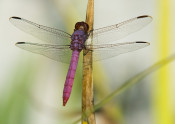 Partners for Fish and Wildlife Program - US Fish and Wildlife Service (USFWS) About the Partners Program The Partners for Fish and Wildlife Program’s (Partners Program) mission is to achieve voluntary habitat restoration on private lands for the benefit of Federal Trust Species. A Partners Program partnership is a voluntary agreement between a private landowner (any non-State or non-Federally owned land) and the US Fish and Wildlife Service (USFWS) and its partners for financial and technical assistance toward achievement of an agreed upon restoration project. A cooperative agreement with a minimum 10 year term is... Read More →
Partners for Fish and Wildlife Program - US Fish and Wildlife Service (USFWS) About the Partners Program The Partners for Fish and Wildlife Program’s (Partners Program) mission is to achieve voluntary habitat restoration on private lands for the benefit of Federal Trust Species. A Partners Program partnership is a voluntary agreement between a private landowner (any non-State or non-Federally owned land) and the US Fish and Wildlife Service (USFWS) and its partners for financial and technical assistance toward achievement of an agreed upon restoration project. A cooperative agreement with a minimum 10 year term is... Read More →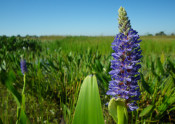 Private Lands Assistance via Texas Parks and Wildlife Department (TPWD) - Texas Parks and Wildlife Department TPWD provides technical assistance, free of charge to land managers who wish to incorporate wildlife management practices into present and future land use decisions. Upon request, a TPWD wildlife biologist will meet with the landowner to perform an ecological assessment of the property and discuss the landowner’s management goals. The wildlife biologist will: provide the landowner with tailored recommendations in the form of a written management plan and demonstrate proper record keeping for wildlife management progress detail and demonstrate wildlife population survey techniques... Read More →
Private Lands Assistance via Texas Parks and Wildlife Department (TPWD) - Texas Parks and Wildlife Department TPWD provides technical assistance, free of charge to land managers who wish to incorporate wildlife management practices into present and future land use decisions. Upon request, a TPWD wildlife biologist will meet with the landowner to perform an ecological assessment of the property and discuss the landowner’s management goals. The wildlife biologist will: provide the landowner with tailored recommendations in the form of a written management plan and demonstrate proper record keeping for wildlife management progress detail and demonstrate wildlife population survey techniques... Read More →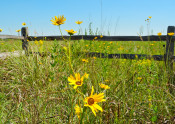 Purchase of Conservation Easements - Various Land Trust and Government Agencies Conservation easements often involve the donation of development rights of land. This donation is often used to obtain a tax deduction. However, in some cases, the development rights of land can be purchased by a willing land trust or government program for a one-time cash payment. Purchased conservation easements are also known as the purchase of development rights (PDRs). If there is funding available for the PDRs, the purchase price is often less than the value of the full value of the... Read More →
Purchase of Conservation Easements - Various Land Trust and Government Agencies Conservation easements often involve the donation of development rights of land. This donation is often used to obtain a tax deduction. However, in some cases, the development rights of land can be purchased by a willing land trust or government program for a one-time cash payment. Purchased conservation easements are also known as the purchase of development rights (PDRs). If there is funding available for the PDRs, the purchase price is often less than the value of the full value of the... Read More →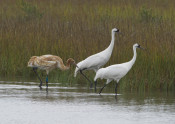 Safe Harbor Agreements (SHA) - US Fish and Wildlife Service (USFWS) Texas is home to many endangered federally listed species which are legally protected by the Endangered Species Act (ESA). Over one-third of the 564 plant and animal species listed as threatened or endangered in the United States use wetland habitats, according to the Texas General Land Office. Many of these species rely on habitat found on privately owned land. A Safe Harbor Agreement (SHA) are a tool for private landowner whom would like to aid in the recovery of a listed or... Read More →
Safe Harbor Agreements (SHA) - US Fish and Wildlife Service (USFWS) Texas is home to many endangered federally listed species which are legally protected by the Endangered Species Act (ESA). Over one-third of the 564 plant and animal species listed as threatened or endangered in the United States use wetland habitats, according to the Texas General Land Office. Many of these species rely on habitat found on privately owned land. A Safe Harbor Agreement (SHA) are a tool for private landowner whom would like to aid in the recovery of a listed or... Read More →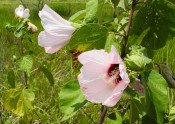 Tax Deduction via Bargain Sale - IRS A bargain sale is the sale of land or other assets to a charity, land trust, or other non-profit for less than fair market value. In general, the fair market value, less the sale price, can be deducted from your taxes as a charitable donation as long as the property has been held for at least one year by the landowner. In a single year, this deduction is limited to 30% of the donor’s adjusted gross income, but can be carried forward over five years. This can... Read More →
Tax Deduction via Bargain Sale - IRS A bargain sale is the sale of land or other assets to a charity, land trust, or other non-profit for less than fair market value. In general, the fair market value, less the sale price, can be deducted from your taxes as a charitable donation as long as the property has been held for at least one year by the landowner. In a single year, this deduction is limited to 30% of the donor’s adjusted gross income, but can be carried forward over five years. This can... Read More →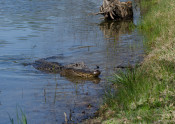 Tax Deduction via Donation of Conservation Easement - IRS What is a Conservation Easement? A conservation easement is a voluntary legal agreement between a property owner and a qualified entity (public agency or private conservation organization/non-profit), which will restrict the future land uses of a property to protect its natural and ecological qualities. Conservation easements can permanently protect land from development while the landowner continues to own the land. Conservation easements are designed with the unique characteristics of the land and land use goals of the landowner in mind. Conservation easements can protect land while still... Read More →
Tax Deduction via Donation of Conservation Easement - IRS What is a Conservation Easement? A conservation easement is a voluntary legal agreement between a property owner and a qualified entity (public agency or private conservation organization/non-profit), which will restrict the future land uses of a property to protect its natural and ecological qualities. Conservation easements can permanently protect land from development while the landowner continues to own the land. Conservation easements are designed with the unique characteristics of the land and land use goals of the landowner in mind. Conservation easements can protect land while still... Read More →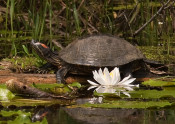 Tax Deduction via Donation of Land - IRS Real Estate Donation A landowner may be interested in gifting a property to a charity or land trust. When a charity or land trusts accepts a real estate donation, the landowner can deduct the fair market value of the land from his or her federal taxes. Depending on how long the landowner has held the property, deduction is capped at 30% (held for a year or more) or 50% (held for less than a year) of the adjusted gross income. Excess contributions can be carried forward for... Read More →
Tax Deduction via Donation of Land - IRS Real Estate Donation A landowner may be interested in gifting a property to a charity or land trust. When a charity or land trusts accepts a real estate donation, the landowner can deduct the fair market value of the land from his or her federal taxes. Depending on how long the landowner has held the property, deduction is capped at 30% (held for a year or more) or 50% (held for less than a year) of the adjusted gross income. Excess contributions can be carried forward for... Read More →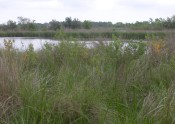 Texas Coastal Program - US Fish and Wildlife Service (USFWS) The Coastal Program assists with funding for coastal habitat projects. The Coastal Program partners with Federal programs, State agencies, Tribal and local governments, non-profit organizations, businesses, industry, land trusts, and private landowners who wish to fulfill habitat conservation goals on their land. The Coastal Program is a reimbursement program. The landowner is not reimbursed for the cost-share portion of the project cost until after the project is completed. Cooperative partnerships are emphasized by the Coastal Program. Coastal Program partners, known as cooperators,... Read More →
Texas Coastal Program - US Fish and Wildlife Service (USFWS) The Coastal Program assists with funding for coastal habitat projects. The Coastal Program partners with Federal programs, State agencies, Tribal and local governments, non-profit organizations, businesses, industry, land trusts, and private landowners who wish to fulfill habitat conservation goals on their land. The Coastal Program is a reimbursement program. The landowner is not reimbursed for the cost-share portion of the project cost until after the project is completed. Cooperative partnerships are emphasized by the Coastal Program. Coastal Program partners, known as cooperators,... Read More →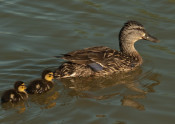 Texas Prairie Wetlands Project - Ducks Unlimited The Texas Prairie Wetlands Project (TPWP) is a partnership between Ducks Unlimited, Texas Parks and Wildlife Department, USDA Natural Resources Conservation Service, and U.S. Fish and Wildlife Service. The TPWP mission is to create overwintering habitat for waterfowl and improve health and survival rates before migration in the spring. TPWP works with private landowners in 28 counties on the Texas Gulf Coast to restore and enhance existing wetlands and to create new wetlands. TPWP provides technical assistance for surveying, engineering, and designing a wetland project and... Read More →
Texas Prairie Wetlands Project - Ducks Unlimited The Texas Prairie Wetlands Project (TPWP) is a partnership between Ducks Unlimited, Texas Parks and Wildlife Department, USDA Natural Resources Conservation Service, and U.S. Fish and Wildlife Service. The TPWP mission is to create overwintering habitat for waterfowl and improve health and survival rates before migration in the spring. TPWP works with private landowners in 28 counties on the Texas Gulf Coast to restore and enhance existing wetlands and to create new wetlands. TPWP provides technical assistance for surveying, engineering, and designing a wetland project and... Read More →

